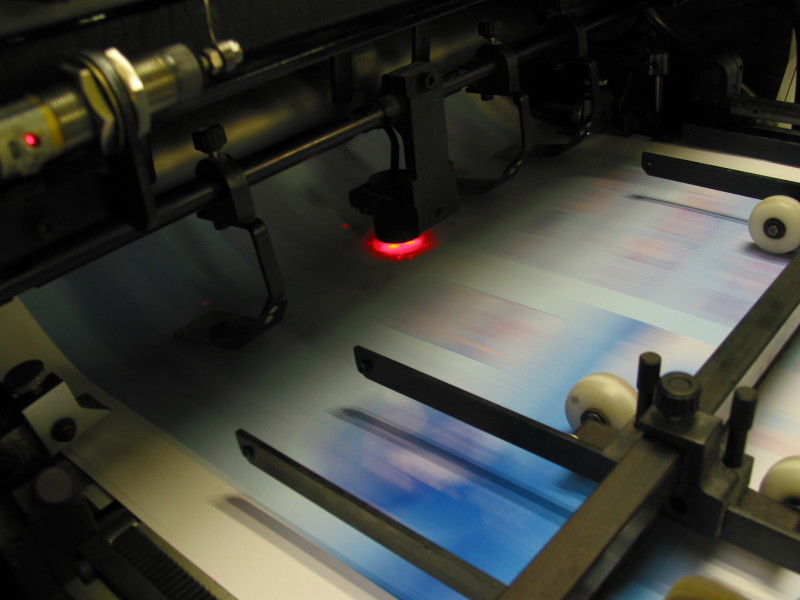Offset Printing
Offset printing has been around for more than a century, and for decades it was the best way to print just about everything commercial: newspapers, magazines, booklets, advertisements, postcards, brochures and more.
Generally speaking, offset printing works by transferring ink from a plate to a rubber sheet, which then rolls the ink onto paper, vinyl or other surface. This is in contrast to digital printing, which does not use plates to transfer ink to paper.
Offset printing uses CMYK (Process or Full Colour) and Pantone spot colour (PMS). This process uses ink and plates to transfer an image onto paper. It produces high quality cost effective results for long print runs. Offset printing is the best choice when larger quantities are needed, and provides accurate color reproduction, and crisp, clean professional looking printing.
Digital Printing
Digital printing can print both CMYK and RGB, although colour shifts may occur with RGB content. Digital printing shines when lower quantities are needed a run of 20 Business cards or 100 Flyers. Another benefit of digital printing is it's variable data capability. When each piece needs a unique code, name or address, digital is the only way to go.
As a digital printer requires no printing plates, there is less time and expense involved in setting up a file to print. This means that a finished file can be proofed and final quantity run within a short time period. Proofs are also able to be printed on the final stock choice for accurate colour checking. Digital printing can appear less impressive than offset, especially within certain colour ranges.
Wide Format Printing
Banners, posters, trade show graphics, wallpaper, back-lit film (aka duratrans), vehicle image wraps, electronic circuit schematics, architectural drawings, construction plans, backdrops for theatrical and media sets, and any other large format artwork or signage.


